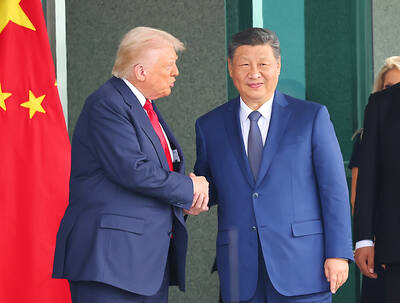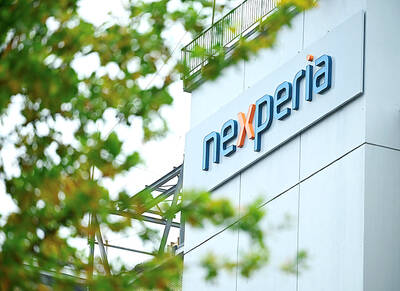Global semiconductor sales this year and next will probably increase more than previously forecast, bolstered by demand for personal computers and consumer electronics, the chip industry's largest association said.
Chip sales may increase 3.8 percent to US$257.2 billion this year, compared with the US$253.5 billion projected in May, WSTS Inc said today on its Web site. Industry revenue will rise 9.1 percent to US$280.6 billion next year, the association said, exceeding the US$279.2 billion predicted earlier.
The group's forecasts diverge from those at research firm iSuppli Corp and the Semiconductor Industry Association, which reduced their estimates this year. Falling prices of computer memory eroded chip profits at Samsung Electronics Co (三星電子) and Hynix Semiconductor Inc (海力士半導體) in the latest quarter, while Elpida Memory Inc posted its smallest profit in six quarters.
WSTS forecast that sales of computer processors will rise 4.3 percent this year, compared with an earlier projection for a 1.2 percent decline.
The group "foresees a continuously growing demand for electronic products such as PCs, digital consumer appliances and mobile communications, enhanced by the increase of semiconductor content per installed system," it said in a statement.
Intel Corp, the world's largest semiconductor maker, last month reported that third-quarter profit rose 43 percent on higher demand for personal computers and forecast sales that beat estimates.
WSTS, whose members account for about 90 percent of the industry, cut next year's forecast for global memory chip sales by 2.3 percent to US$62.6 billion.

RUN IT BACK: A succesful first project working with hyperscalers to design chips encouraged MediaTek to start a second project, aiming to hit stride in 2028 MediaTek Inc (聯發科), the world’s biggest smartphone chip supplier, yesterday said it is engaging a second hyperscaler to help design artificial intelligence (AI) accelerators used in data centers following a similar project expected to generate revenue streams soon. The first AI accelerator project is to bring in US$1 billion revenue next year and several billion US dollars more in 2027, MediaTek chief executive officer Rick Tsai (蔡力行) told a virtual investor conference yesterday. The second AI accelerator project is expected to contribute to revenue beginning in 2028, Tsai said. MediaTek yesterday raised its revenue forecast for the global AI accelerator used

TEMPORARY TRUCE: China has made concessions to ease rare earth trade controls, among others, while Washington holds fire on a 100% tariff on all Chinese goods China is effectively suspending implementation of additional export controls on rare earth metals and terminating investigations targeting US companies in the semiconductor supply chain, the White House announced. The White House on Saturday issued a fact sheet outlining some details of the trade pact agreed to earlier in the week by US President Donald Trump and Chinese President Xi Jinping (習近平) that aimed to ease tensions between the world’s two largest economies. Under the deal, China is to issue general licenses valid for exports of rare earths, gallium, germanium, antimony and graphite “for the benefit of US end users and their suppliers

Dutch chipmaker Nexperia BV’s China unit yesterday said that it had established sufficient inventories of finished goods and works-in-progress, and that its supply chain remained secure and stable after its parent halted wafer supplies. The Dutch company suspended supplies of wafers to its Chinese assembly plant a week ago, calling it “a direct consequence of the local management’s recent failure to comply with the agreed contractual payment terms,” Reuters reported on Friday last week. Its China unit called Nexperia’s suspension “unilateral” and “extremely irresponsible,” adding that the Dutch parent’s claim about contractual payment was “misleading and highly deceptive,” according to a statement

Artificial intelligence (AI) giant Nvidia Corp’s most advanced chips would be reserved for US companies and kept out of China and other countries, US President Donald Trump said. During an interview that aired on Sunday on CBS’ 60 Minutes program and in comments to reporters aboard Air Force One, Trump said only US customers should have access to the top-end Blackwell chips offered by Nvidia, the world’s most valuable company by market capitalization. “The most advanced, we will not let anybody have them other than the United States,” he told CBS, echoing remarks made earlier to reporters as he returned to Washington